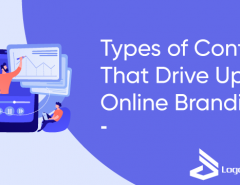The Qream is a service that showcases high-quality short films, documentaries, and series that are recommended by experts in the industry. Its goal is to help people find something interesting and engaging to watch. The Qream needed to revamp its user experience (UX), but it didn’t want to throw out everything that worked well in its old design it just wanted more of it!
We collaborated on this project as part of my capstone class at SCAD Atlanta. Together, we set out to combine visual storytelling with UX best practices in order to deliver something new and exciting for viewers while still providing them with what they needed: a clear path through the site’s content (and ultimately enjoyment). In this article, I’ll walk through how we achieved those goals using user research data collected during our project meetings as well as customer feedback after launch day.
From Concepts to Stunning Websites
Web design is the process of creating websites. It involves planning, designing, and organizing the visual appearance and layout of a website. This includes choosing colors, fonts, images, and other visual elements to create an aesthetically pleasing and user-friendly website. If you want to see an example of good web design in action, check out this website: https://theqream.com/
The Qream website, created by a professional web design company, showcases their expertise in creating visually appealing and well-organized websites. They use their skills in choosing colors, fonts, and images to create a beautiful and user-friendly website that effectively represents their brand and engages their target audience.
Establishing a Narrative Through Visual Elements
The Qream uses the visual elements on their site to establish a consistent and relevant narrative that engages users with its content, making it memorable for them.
The importance of establishing a narrative cannot be understated, if you don’t have one, then how will people know what your website is about? A good example of this would be if we were trying to sell ice cream (our specialty) but instead focused on selling hamburgers instead; even though both are delicious foods that can be eaten at any time of day or night (or even breakfast), our focus would still be off target because we didn’t establish what we wanted our focus as being first before moving forward into other areas such as pricing plans or delivery options.
The Importance of Visual Storytelling in UX Design
Visual storytelling has become an essential part of UX design. When you tell a story with your product, you’re not only engaging users emotionally, but also helping them understand how to use it.
The importance of visual storytelling in UX design can be summed up using two words: empathy and usability. Empathy is one of the most important aspects of building great digital products because it allows us as designers (and creators) to understand our customers better than ever before, and that’s crucial if we want our designs to succeed!
We know from research that people tend not only prefer visual content over text-based information but also learn better through visuals than text alone. Visuals help us see things in new ways; they allow us access into worlds beyond our own experience so that we can learn more about others’ lives and perspectives, which makes them perfect tools for storytelling!
Incorporating User Journeys into Visual Storytelling
User journeys are a way to understand the user’s needs and expectations. They’re also useful for identifying pain points, opportunities, and assumptions in your product or service.
User journeys can be used to create personas and scenarios that help you understand how people will use your product or service. This enables you to create an experience that meets their needs in the best possible way. A user journey map helps you see where there are gaps between what your users want from an experience and what they actually get from it, and how those gaps might be closed through design improvements.
User journeys, like characters and scenarios, reveal the context and needs of users, helping to identify ways to optimize the experience. Based on this data, designers can create specialized, targeted experiences that meet the real needs of the audience.
User journey mapping makes it possible to identify gaps between expectations and actual user experiences. This provides an opportunity to close these gaps by improving the design of the product or service. By integrating this approach into visual storytelling, design teams have a unique opportunity to create an intuitive and responsive product that meets the needs and expectations of users at different stages of their interaction with it.
Interactive Elements and Engagement in UX Design
Interactive elements are the most important part of UX design. They can be used to engage users, inform them of what they can expect, and build trust in the product or service being offered. Interactive elements also help break up text-heavy content and create a more visually-appealing experience for readers. This can help you attract potential customers who may otherwise pass over your site because it lacks visual appeal and engagement opportunities. Explore effective UX design with well-crafted UX flows to ensure a seamless and engaging user experience.
Visual storytelling is an excellent way to engage users with interactive elements like quizzes, polls, or even simple questions that require answers from readers before they can continue reading content on your website.
Challenges and Lessons Learned in Implementing Visual Storytelling
Implementing visual storytelling in UX design has its challenges and extremely valuable lessons. One of the key challenges is balancing aesthetics and functionality. The desire for beauty should not prevail over ensuring efficiency and convenience of user interaction.
Another challenge is to correctly perceive visual storytelling as an interaction tool. It is not only a set of beautiful images, but also a connection that is created between the user and the product through targeted visual effects.
There are valuable lessons to be learned from The Qream case study. At the initial stage of the concept, visual storytelling helped to clearly convey ideas and encourage interaction with the product. In user testing, it became a critical tool for assessing the perception and impact on the target audience. It is important to note that this was possible due to the combination of visual effect with objective success metrics.
Thus, the implementation of visual storytelling requires balance, understanding of its role, and effective combination with success metrics to achieve great results in creating user-centered products.
Conclusion
The exploration of visual storytelling in UX design, exemplified through The Qream case study, sheds light on the intricate blend of creativity, functionality, and user engagement. This journey underscores the significance of harmonizing aesthetics with practicality in crafting user-centered digital experiences.
The Qream’s initiative to overhaul its UX while retaining successful elements of its previous design encapsulates a nuanced approach to evolution. Collaborating on this project unveiled the potential of intertwining visual storytelling with UX principles to introduce novelty without losing sight of user needs. Leveraging insights from user research and post-launch feedback provided a roadmap to achieving these goals. Web design, as exemplified by The Qream’s website, signifies the prowess of a professional design entity in amalgamating visual appeal with user-centric functionality. The strategic use of colors, fonts, and images illustrates an exemplary marriage of aesthetics and usability, effectively representing the brand and captivating the intended audience.
Central to this narrative is the establishment of a coherent and engaging storyline through visual elements. The narrative acts as a guiding thread, imparting a clear sense of purpose and direction to users navigating the site. The absence of a narrative risks confusion, emphasizing the pivotal role storytelling plays in articulating a website’s essence and function.
Visual storytelling’s emergence as an integral facet of UX design is underscored by its capacity to evoke empathy and enhance usability. Its ability to engage users emotionally while facilitating comprehension and usage remains pivotal. Harnessing visual content’s superiority over text-based information aligns with users’ preferences and aids better comprehension, rendering visuals an indispensable tool for storytelling. Incorporating user journeys into visual storytelling unveils invaluable insights into user needs, aspirations, and stumbling blocks within a product or service. These journeys, akin to characters and scenarios, illuminate the context, enabling the design of tailored experiences. Their integration into visual storytelling empowers designers to bridge gaps between user expectations and actual experiences, fostering an intuitive and responsive product.
Interactive elements emerge as keystones in UX design, fostering user engagement and trust. They serve as bridges between users and the product, breaking down dense textual content while enhancing visual allure. Employing interactive elements within visual storytelling, such as quizzes or polls, elevates user engagement and enriches the browsing experience.
However, implementing visual storytelling in UX design poses challenges, notably the delicate balance between aesthetics and functionality. A quest for beauty shouldn’t compromise usability or efficiency. Moreover, perceiving visual storytelling solely as beautiful images overlooks its profound potential as a conduit for user-product interaction. The Qream case study illuminates lessons crucial for successful implementation: visual storytelling’s pivotal role in idea communication and audience interaction, its critical assessment through user testing, and the necessity of coupling visual effects with measurable success metrics.
In essence, harnessing visual storytelling in UX design necessitates equilibrium, comprehension of its significance, and an astute amalgamation with success metrics. This integration paves the way for the creation of user-centric products that resonate deeply with audiences across various touchpoints.




